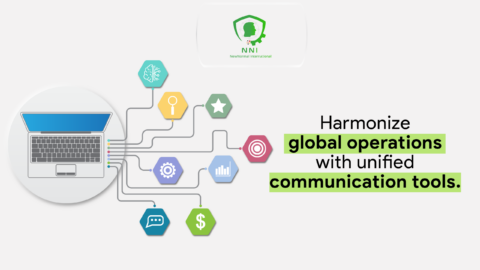Streamlining Worldwide Business Functions through Advanced Communication Solutions
In the globalized business ecosystem, the ability to harmonize global operations with unified communication tools has become indispensable for multinational corporations. This article delves into how unified communication technologies are pivotal in integrating various operational facets of a globally dispersed business.
The Critical Role of Unified Communication in Global Operations
In today’s interconnected world, where businesses operate across continents and teams are geographically dispersed, traditional communication methods often fall short. The physical separation can create silos, hinder collaboration, and impede the flow of critical information. This is where unified communication tools emerge as transformative agents, dissolving the barriers of distance and facilitating seamless interaction across all corners of the globe.
Imagine a symphony orchestra where musicians are scattered across the world, each playing their part in isolation. The resulting performance would be fragmented and disjointed, lacking the harmonious cohesion that defines a masterpiece. Unified communication tools act as the conductor, uniting geographically dispersed teams into a single, cohesive unit. These tools encompass a range of technologies, including:
Video conferencing: Enabling face-to-face interaction, regardless of distance, fostering closer relationships and facilitating effective collaboration.
Instant messaging: Providing an immediate and efficient means of communication, ensuring everyone is kept informed and decisions are made quickly.
File sharing: Allowing for the seamless exchange of documents and information, regardless of location, promoting transparency and collaboration.
Presence awareness: Offering real-time information about team availability, fostering efficient communication and collaboration without unnecessary delays.
Unified messaging: Integrating diverse communication channels, such as email, voicemail, and SMS, into a single platform, streamlining communication and reducing administrative burden.
By embracing unified communication tools, businesses can:
Bridge the Communication Gap: Eliminating physical boundaries, these tools ensure that everyone is connected and informed, regardless of their location. This enhances team cohesion, fosters a sense of shared purpose, and drives collective success.
Enhance Collaboration: Facilitating real-time interaction and information exchange, unified communication tools empower geographically dispersed teams to work together effectively on projects, regardless of location. This collaborative environment leads to faster problem-solving, improved decision-making, and enhanced innovation.
Boost Productivity: By minimizing administrative tasks and streamlining communication processes, unified communication tools free up valuable time and resources for teams to focus on core business activities. This increased productivity translates to improved efficiency, cost savings, and enhanced competitive advantage.
Improve Employee Engagement: By fostering a sense of connection and belonging, unified communication tools enhance employee engagement and satisfaction. This leads to a more motivated and productive workforce, contributing to overall organizational success.
Attract and Retain Global Talent: By providing a flexible and collaborative work environment, unified communication tools enable businesses to attract and retain top talent from across the globe. This access to a diverse pool of skilled individuals fosters innovation, drives growth, and propels businesses to the forefront of their industries.
Unified communication tools are not just technological advancements; they are catalysts for organizational transformation. They facilitate a shift towards a globalized workforce, where talent is valued regardless of location, and collaboration transcends geographical boundaries. In today’s interconnected world, embracing these tools is no longer just a competitive advantage; it is a strategic imperative for any organization seeking to thrive in the global marketplace.
Change Management in Global Communication Integration
Implementing unified communication tools in global operations is a significant change management initiative. It requires a strategic approach, encompassing the adoption of new technologies and the restructuring of communication protocols to enhance overall operational coherence.
Executive Coaching for Leading Global Teams
Leadership is crucial in the effective deployment and utilization of unified communication tools. Through executive coaching, business leaders can acquire the skills needed to manage diverse, global teams and foster a culture of open communication and collaboration.
Effective Communication: The Pillar of Unified Operations
Effective communication is the cornerstone of successful global operations. Unified communication tools enable clear, consistent, and real-time interactions, essential for maintaining operational continuity and team cohesion across different time zones.
Generative AI in Enhancing Communication Systems
The integration of generative artificial intelligence in communication systems can further optimize global operations. AI can automate routine communication tasks, translate languages in real-time, and personalize interactions, thereby enhancing the efficiency of global communication.
Conclusion Unified Communication Tools
In conclusion, the emphasis on “Harmonize global operations with unified communication tools” is crucial for businesses operating on a global scale. By leveraging these advanced technologies, companies can ensure cohesive operations, enhanced productivity, and a unified corporate culture, regardless of geographic boundaries.
#UnifiedCommunications, #GlobalBusiness, #OperationalEfficiency, #AIinBusiness, #GlobalTeamManagement











